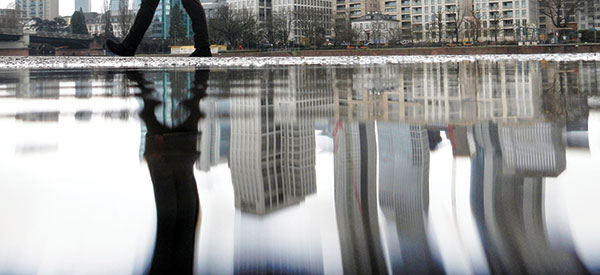City
 Lawrence Ypil
Lawrence Ypil
Dog-ears in the wrong notebook
IN the morning, I dream. At night, thank you.
In the memory of the movies, a professor is resurrected from the dead by some students. A candle is lit, a picture of the professor as a student is ripped from an old yearbook and dipped in a bowl of water. And from the town’s graveyard, his resurrected body rises from the ground, and runs towards the school.
But because the photo that was used to cast the spell was ripped near his neck, the resurrected professor walks around beheaded. He rises from grave and walks into the night. He holds his screaming head like it were a lantern in the dark.
Should I be worried that among the many childhood memories, this is one of those that stand out the most? That it was an episode in Steven Spielberg’s Amazing Stories. That the professor was played by Christopher Lloyd, the same actor that played the crazy professor in Back to the Future. That I watched this episode on what probably was a betamax copy, being played on a Sunday night in my parent’s bedroom, while they were out having dinner, and my brother and I wanted to stay in their room because here at least the floor had a carpet and we could turn the aircon on — but not for too long.
Why do we remember what we remember? No. Nonono. The question of memory is too easy a question, having been asked before, having foddered too easily complicated an answer — in the sciences, the arts. I have asked this question before, and always.
The real question is this: Why does the 80s suddenly feel like it was so long ago, so far away?
In the past few weeks, I have been visiting the nearby museum to watch a film by Singaporean artist Tan Pin Pin, called “80 km/h”. It’s a documentary film Pin Pin made in 2004, where she took a video camera and positioned it on her car window and beginning in Changi Airport on the east of Singapore drove towards the western tip of the island, while continuously recording. It’s a film, ultimately, about moving. What it means to live in an island where one can travel from one tip to the next in a matter of 38 minutes, travelling at the speed limit of 80 km/h. It is about what can be captured at that speed, what it is possible to document with a camera at that pace. Like other pieces of art that in their beauty become inadvertently a tribute to the art form itself, this film in its very mode of linear unravelling becomes a paean to the unspooling of film itself: the world in motion as a photograph placed one after the other, the real affirming itself not by the this, this, but by the then-after, then-next, the world as real because once passed, we can only really turn our heads back in a gesture of inadvertent longing but never really return to the moment passed. As in childhood, at the backseat of a car looking at the world flash by out the window and the question unasked: are we there yet? Because one secretly wished the answer will be no.
In the city of my dreams, the sky is grey and it is always about to rain. There are malls but they are less like the malls of today and more like the old downtown shops from the 70s. The facades are speckled with grime. The escalators are slow and clunky. They lead down to underground rivers, caverns. In the city of my dreams, there is always a plane arriving and my luggage is always missing, or at least my slippers. To run through the streets barefoot. To move from one bus to the next, to know the airplane will leave any time now. And although it may seem imperative to reach the airport on time, the face of a stranger seen eye-to-eye on a street, someone I haven’t met yet but know (you know the kind right?) reassures me that in this city of dreams that is both anywhere and nowhere, things will be fine, because I am recognised.




